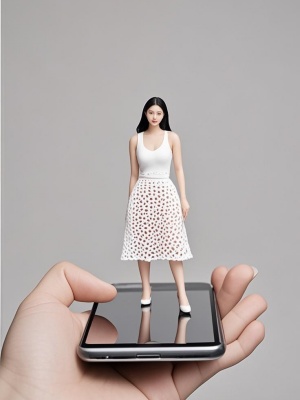The Art of Portrait Fine Art Photography: A Comprehensive Guide
Portrait fine art photography is a captivating genre that blends technical skill with artistic vision. Unlike traditional portrait photography, which focuses on capturing a person's likeness, fine art portraits aim to convey deeper emotions, concepts, and narratives. This article explores the essence of portrait fine art photography, its techniques, challenges, and solutions.
Understanding Portrait Fine Art Photography
Portrait fine art photography transcends mere documentation. It is a form of artistic expression where the photographer uses lighting, composition, and post-processing to create images that evoke emotions and tell stories. These portraits often hang in galleries and private collections, valued for their aesthetic and conceptual depth.
Key characteristics of portrait fine art photography include:
- Emphasis on mood and atmosphere
- Creative use of lighting and shadows
- Unique perspectives and compositions
- Intentional post-processing techniques
Essential Techniques for Creating Fine Art Portraits
Mastering Lighting
Lighting is the cornerstone of portrait fine art photography. Unlike commercial portraits that often use flat, even lighting, fine art portraits employ dramatic lighting to create depth and emotion. Techniques like Rembrandt lighting or chiaroscuro can add a painterly quality to your images.
Composition and Framing
Fine art portraits often break conventional composition rules. Photographers might use negative space creatively or place subjects off-center to create tension. The rule of thirds remains useful, but intentional rule-breaking can produce striking results.

Post-Processing for Artistic Effect
Post-processing is where many fine art portraits come to life. Techniques might include:
- Tonal adjustments to create mood
- Selective color grading
- Texture overlays for a painterly effect
- Dodging and burning to sculpt light
Common Challenges and Solutions
Creating compelling portrait fine art photography presents unique challenges. Below is a problem-solution matrix for common issues:
| Problem | Solution |
|---|---|
| Lack of conceptual depth | Develop a clear artistic statement before shooting |
| Technical perfection but emotional flatness | Focus on connection with subject and authentic expression |
| Difficulty achieving painterly quality | Experiment with AI painting techniques in post-processing |
The Role of Technology in Fine Art Portraiture
Modern technology, including AI tools, has expanded possibilities in portrait fine art photography. Tools for photo restoration and enhancement can help achieve vintage looks, while AI-assisted composition tools can suggest unconventional framing.

However, technology should serve the artistic vision rather than replace it. The most compelling fine art portraits balance technical excellence with genuine human connection and creative expression.
Conclusion: The Enduring Power of Fine Art Portraits
Portrait fine art photography remains one of the most powerful ways to explore human identity and emotion through imagery. By mastering both technical skills and artistic vision, photographers can create works that transcend time and trends. Whether you're interested in classical approaches or cutting-edge AI art techniques, the world of fine art portraiture offers endless creative possibilities.

For inspiration, visit our gallery to see examples of exceptional portrait fine art photography that blend traditional techniques with modern innovation.